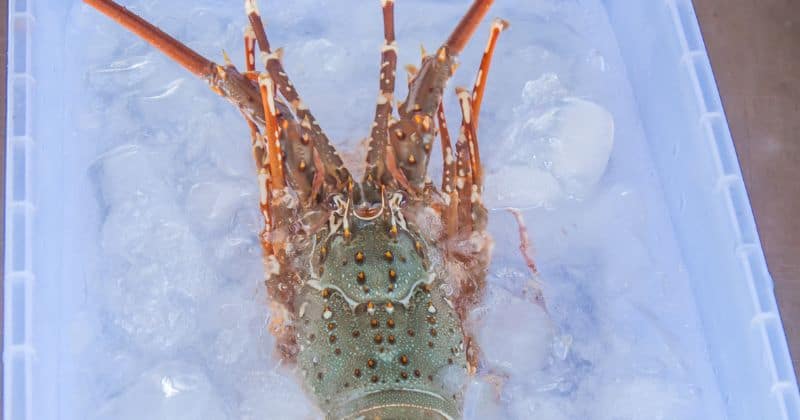Have you ever seen a live lobster foaming at the mouth? It might seem strange, but this is some sign of distress. If this happens to your lobster, here is what it means.
Live lobster foam at the mouth when they are stressed or suffocating. This is because a foamy substance made of mucus and oxygen bubbles accumulates in their mouths. If your lobster has been transported in too-warm water, it may be experiencing thermal shock and suffer from oxygen deprivation due to lack of circulation. It may lead to dead soon.
Here is what you should know and what to do when this happens.
Cause of Foaming in Live Lobster
Foaming in the mouth is not a good sign for live lobster. And this may be the reasons:
Stress or suffocating
This is the commonest cause of foaming in live lobsters. Some species react more readily to stress and start foaming more quickly when put into an unfamiliar environment or a cramped space.
Stress can also occur if handled too much, causing them to foam and release ammonia that irritates the flesh. Suffocating can also cause foam production due to increased oxygen demand and decreased oxygen supply.
Temperature change
A sudden temperature change can cause a lobster to foam. For example, when a lobster is taken from cold water and placed in warm water, it may start foaming as the temperature of its environment changes. This foaming is due to increased metabolic activity and oxygen demand caused by temperature shock.
Physical injuries and wounds
Injuries and wounds can also lead to foaming. A lobster that has been injured or traumatized may produce foam due to the physical trauma and resulting inflammation. This foam is usually composed of mucus and other secretions released by the lobster’s body in response to the injury.
What to do when your live lobster is foaming at the mouth?
You must take immediate action if your lobster is foaming at the mouth. Here are some things that you can do:
- Check their habitat – It may be shocking for live lobsters if they change their environment from place to place or are overcrowded. To ensure your lobster is safe, inspect its habitat for signs of overcrowding, temperature fluctuations, and water quality.
- Check their health – If your live lobster appears to be foaming excessively, it may be a sign of stress or infection. So check the gills and other body parts to see if there are any physical injuries or illnesses.
- Change their environment – If your live lobster is foaming due to a temperature change, try to adjust the temperature of its environment. Move them to an area that is the preferred temperature and let them acclimatize. Live lobster should live in water between 15-18°C (59-64°F), or if you are storing it for preparation as a meal, the water temperature should be around 4-10°C (40-50°F).
- Contact a vet – If your lobster is still foaming even after taking the necessary steps, consult a veterinarian to identify the cause and get help treating it.
If the foaming at the mouth happens with the live lobster you bought for cooking, it’s a sign that they’re exhausted and need to be put in cold water again. If you cannot do this, then your best option is to cook the lobster as soon as possible.
LobsterAnywhere - overnight Maine lobster delivery that guarantees freshness and flavor in every bite.
Why Cooking Your Lobster is the Best Solution?
Foaming in the mouth usually happens when you store the live lobster in the fridge for a long time. In general live lobster can be stored in the refrigerator for up to two days since we bought it. If you keep it longer than that, the lobster may start foaming.
Cooking your lobster when it starts to foam is the best solution because this can reduce the risk of food poisoning. Because foaming is the sign before the lobster dies, and when it is dead, the flesh will start to degrade quickly and become unsuitable for human consumption.
Even if you didn’t want to eat the lobster now, cooking and then freezing it is still a good option. Pre-cooking will prevent bacterial growth and will make it last longer for a week or month. You can take it out later when needed and quickly heat it in hot water to make a delicious lobster meal.
Overall, foaming in the mouth is not a good sign for live lobsters. To ensure your safety, pay attention to their environment and health and adjust the temperature if necessary. If the lobster starts foaming at the mouth, cooking them is the best option to avoid food poisoning.






